Introduction
How to Deal Blackjack: Part 1
Table of Contents
- Introduction
- What is Expected of You
- Game Security
- Readability
- Procedure
- What to Expect
- Other Parts of the Job
- Blackjack Table Layout
How to Deal BlackjackFurther Reading
- Part 1: Introduction
- Part 2: How to Shuffle Blackjack Cards (Dealer Techniques and Procedures in 2025)
- Part 3: How to Cut, Wash, and Burn Cards in Blackjack (Dealer Procedures in 2025)
- Part 4: Delivering Cards, Pitching, Tucking Hole Cards, Checking Ace & 10
- Part 5: Handling Cheques, Playing the Game
- Part 6: Take & Pay Procedure
- Part 7: Player’s Actions & Blackjack
- Part 8: Color Up, Dead Game, & Other Procedures
- Part 9: Dealer’s Break, Tokes, Customer Service & Other Policies
- Part 10: Game Security
Did this free course help you?
Click to leave a tip to help keep this resource free!
Introduction
When you want to be a dealer the first thing you do is go to dealing school. Before you start learning anything they ask you “Have you ever gambled on the game you want to learn?” My answer to this question was “no”. So I was told to go gamble on a blackjack table and make sure I knew how to play the game before I came back to learn how to deal.
What is Expected of You
When you work as a dealer you will be expected to follow the correct procedures for all actions on a game. These procedures are made, refined and perfected through decades of trial-and-error. Because of this, every casino has variations to the rules and the casino will change the procedure on you and you have to learn it and apply that procedure right away. To be a good dealer you need to be good at game security, readability, and procedures.
Game Security
This is one of the most important factors when dealing. Everything you do as a dealer is procedure or for the cameras. Because the cameras are watching, all hand signals and actions that the players and dealers do need to be clearly indicated. This is to ensure that players don’t cheat as well as stopping dealers from cheating.
Readability
The floor, cameras and players must be able to see and understand all of the dealer actions at all times. This calls for readability, cleanliness, and order when dealing cards and paying bets. Each action must be laid out for all to see and read.
Procedure
All actions by a dealer require a specific predetermined motion. The dealer must complete certain actions at certain times following a set procedure. Things are not done on a whim by the dealer. These actions have been standardized by casinos to bring a level of protection into the game. It is the most important tool a casino has to maintain the reliability and honesty of the game.
What to Expect
When you learn how to deal, the first thing you are taught is the basic procedure. When you’re hired you’ll receive a large packet of procedures that is specific to that casino. You’ll need to go home, study this packet and then practice so you know how to deal when you start work.
Every house, which is also a slang term for casino, has different procedures and when you’re auditioning for a job the managers don’t expect you to know the house way. They are looking at your basic dealing skills. Keep in mind that every “House” will be different when it comes to shuffling procedures, the road map, rubber band, markers, credits, fills and basic game rules. On top of all that, every Floor will have their own expectations and rules for what you are supposed to do. It’s a pain, but keep in mind what rules each Floor wants you to complete. And even though you think something should be done a certain way, that doesn’t matter because you must always do as the Floor tells you! Don’t freak out, you will not get written up on your first day. It is expected that dealers make mistakes, so you will always be given warnings. It is when you don’t follow those warnings and keep doing the same action that you will get written up.
Other Parts of the Job
Because you will be working with money, you will be expected to deal in a neat, clean, readable and reliable way. This includes verbal calls which you will notify the floor of what you are doing. You must make these calls. We will go into Alert Calls more later. Also, you’ll be asked to sign many pieces of paperwork, you must check all of the information on that paper because if anything is wrong and your signature is on the paper then you will be the one to get in trouble. Usually the paperwork is correct but there have been plenty of times where it was wrong and you must not sign your name on it unless it is fixed.
Blackjack Table Layout
Layout
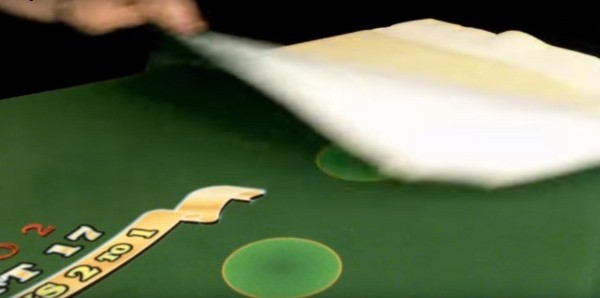
The layout is the felt covering over the table. It can be any game, in the past the layout was normally green but casinos now have an assortment of designs and colors. Under the layout there is a pad of foam or sponge rubber so the table will be soft and it is easier to handle the cards and cheques.
Apron
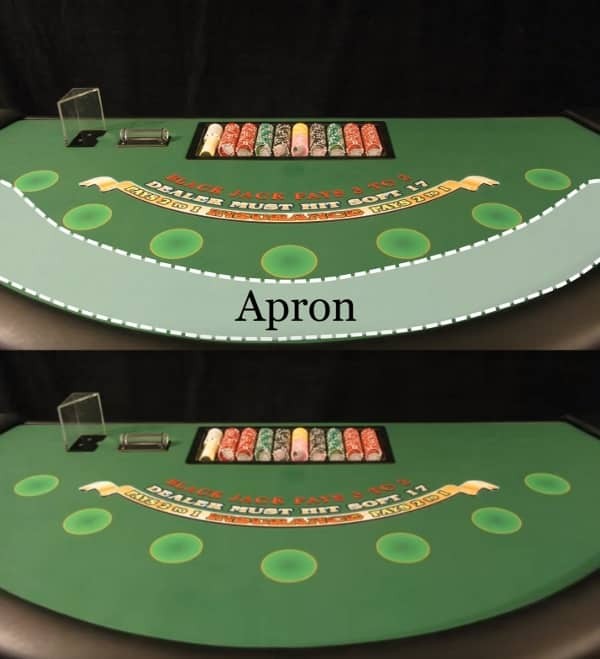
This is the part of the table that is the closest to the players. It is clear of print and it is where the players store their chips, ashtrays or drinks.
Betting Circle
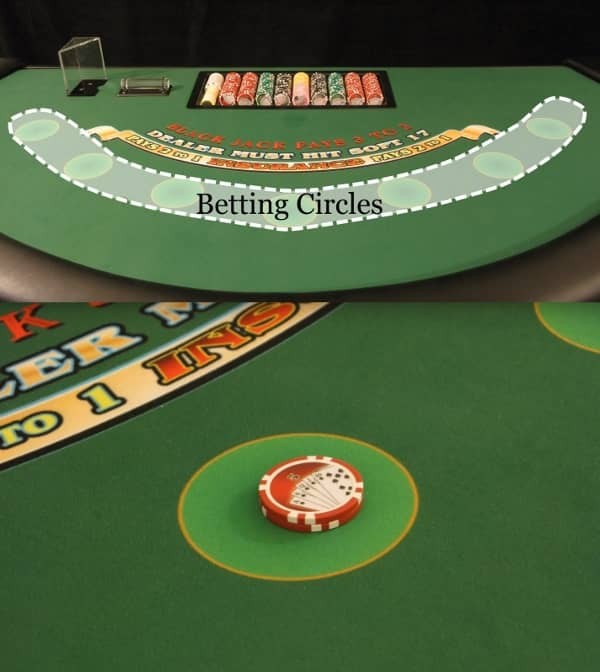
The betting circle is where the players place their bets and this area is usually marked. The wager must be in the betting area to be a legal wager. Most casinos have 7 betting areas per table so 7 people can play… but you will usually only see 6 chairs.
Insurance Line
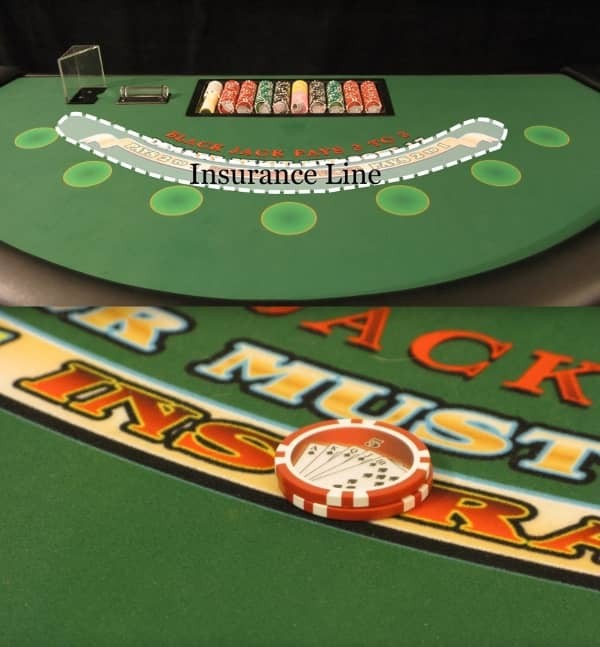
This line is the area that players use to place their insurance bets. The bet has to be in this area to be a legal insurance wager.
Center of the Table
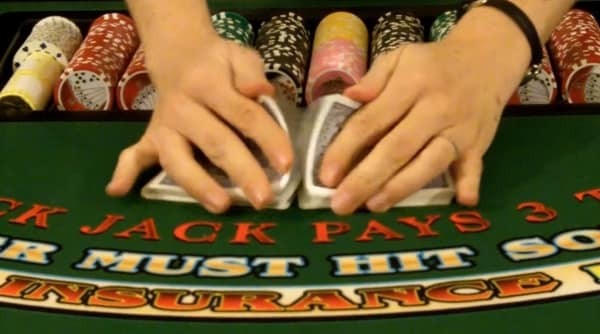
This is the area where the dealer shuffles the cards and handles cheques.
Rack
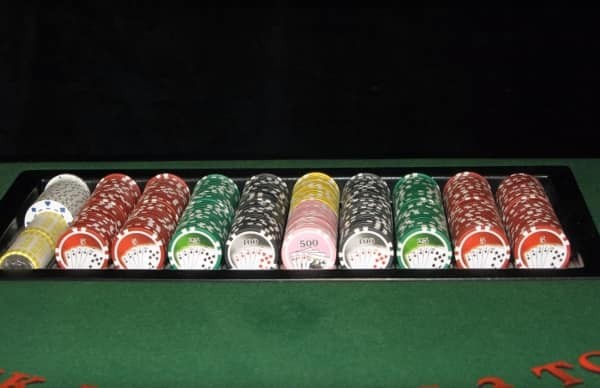
The rack is the metal tray in front of the dealer. This is the dealer’s bank and it is where all of the cheques are held.
Discard Rack
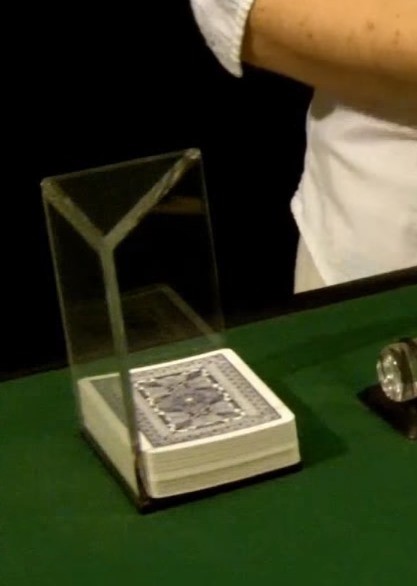
This is the plastic holder that sits next to the rack on the dealers right side. This is where the cards go after a hand is finished.
Paddle
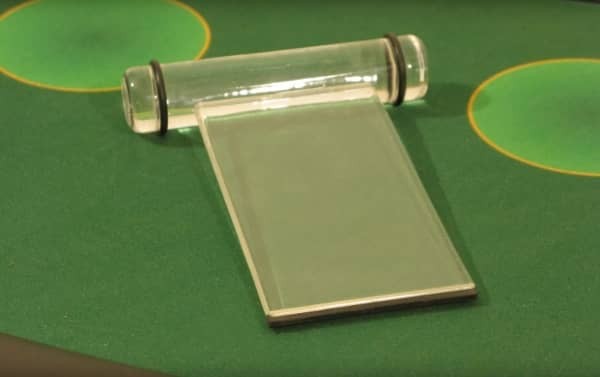
This is a plastic T-shaped tool used to push money through the hole and into the drop box. Lay the money out flat, over the hole and then take the end of the paddle and push it in.
Drop Box
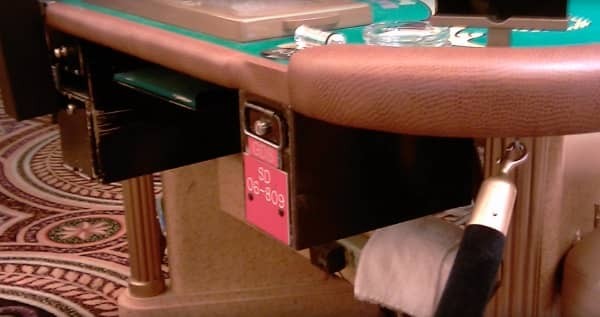
This is a locked box that sits under the table and it catches and holds all the money that the dealer pushes through with the paddle.
